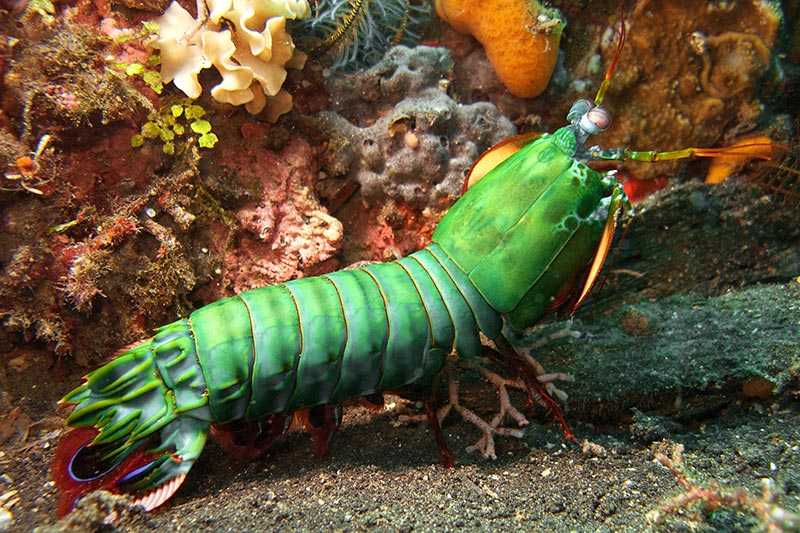The Peacock Mantis Shrimp Inspires New Design Materials

Have you ever longed for ultraviolet and infrared vision? How about an ability to move at incredible speed and strike with the power of a bullet? The Peacock Mantis Shrimp, a crustacean small as 3 to 18cm, is blessed with all of the above.
Mantis shrimps are the feisty relatives of crabs and lobsters, and when they strike, they swing out their dactyl clubs at 80 kilometers per hour, accelerating faster than a 22-caliber bullet. And although they look like “heavily armored caterpillars”, mantis shrimp can easily break glass and smash through mollusc shells.
Their unique vision and ability to move through water at a top speed of 50 miles per hour, creating immensely destructive bubbles and a pressure wave that boils the water in front of it, are not the most interesting facts about Mantis Shrimp. The big question is how Mantis Shrimps can strike 50,000 powerful club blows without suffering any damage.
Biologists and chemical engineers have recently examined the composition of mantis dactyls, the so-called “biological hammers”, and results show three layers of tough and stiff materials.
The external layer features hydroxyapatite, a crystal also found in our bones and teeth, but more carefully aligned. The second layer is made from the same ingredient, but in an amorphous form. These elements provide a strong material considerably more resilient than is found in our own engineering of ceramics. The last layer contains a chitin material found in the exoskeletons of crustaceans, and the arrangement of its tough chitin fibres enables them to absorb the energy of stress waves from the impacts. The three layers allow small cracks to form, but the differences in hardness and orientation prevent the cracks from spreading.
Stiff, light-weight and tough, the clubs of Mantis Shrimps could be the key to the Holy Grail for our own manufacturing of engineered materials.
Based on these amazing findings, teams of researchers have been trying to reproduce the mantis shrimp's club design for developing bullet proof, ultra-lightweight body armor for soldiers; modifying cars’ design to create impact-resistant, lighter-weight vehicles; and protecting athletes from concussions. This proves once more that nature’s engineering is an amazing research area that could help humanity develop more advanced technology.